This mushroom with a cute name is a great edible bolete. The butterball bolete (Suillus weaverae) is distinctive among the many bolete species, making it an easier one to identify and forage. Many people disregard Suillus species because they tend to be slimy and often time-consuming to prep. Still, they’re a good edible species to know because they often grow prolifically in their habitat.
The butterball bolete won’t be a top prize of any forager, but if the woods hold nothing else, this is a great alternative.
- Scientific Name: Suillus weaverae (commonly confused with Suillus granulatus)
- Common Names: Butterball Bolete, Dotted Stalk Suillus, *weeping bolete
- Habitat: With eastern white pines
- Edibility: Edible
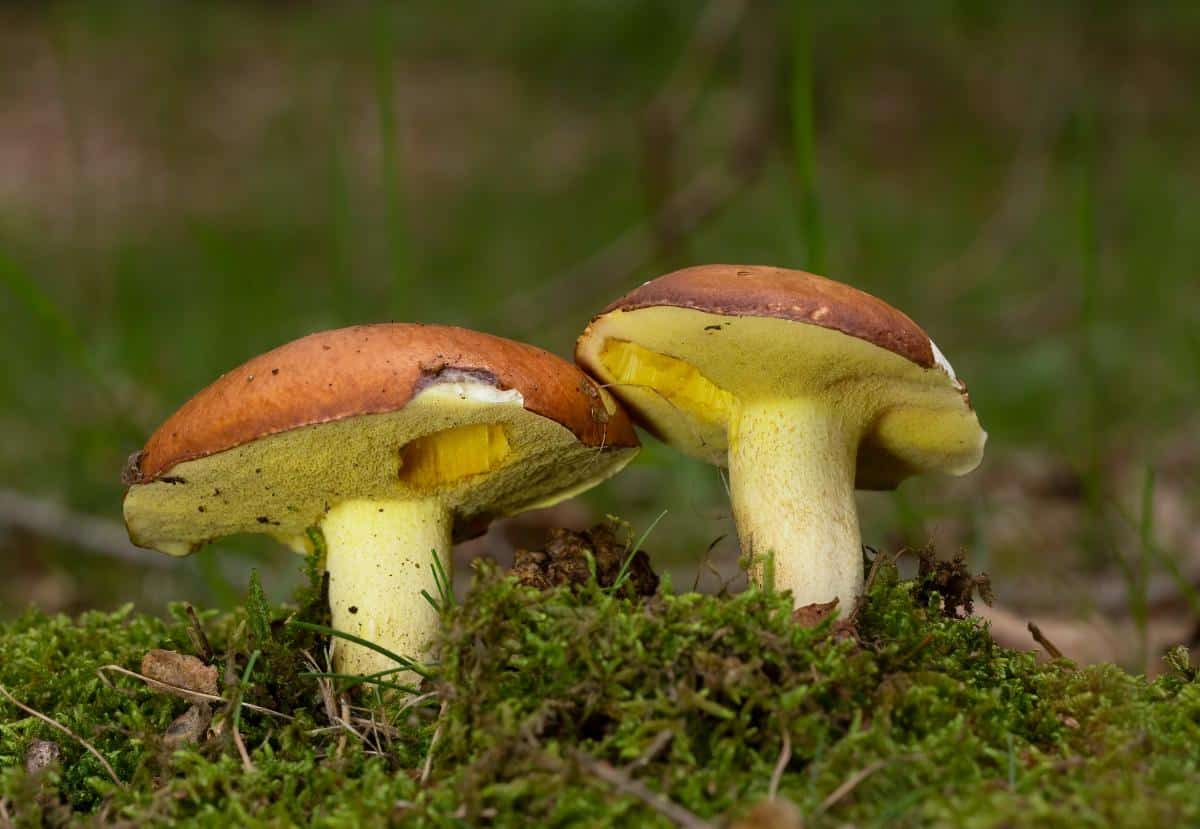
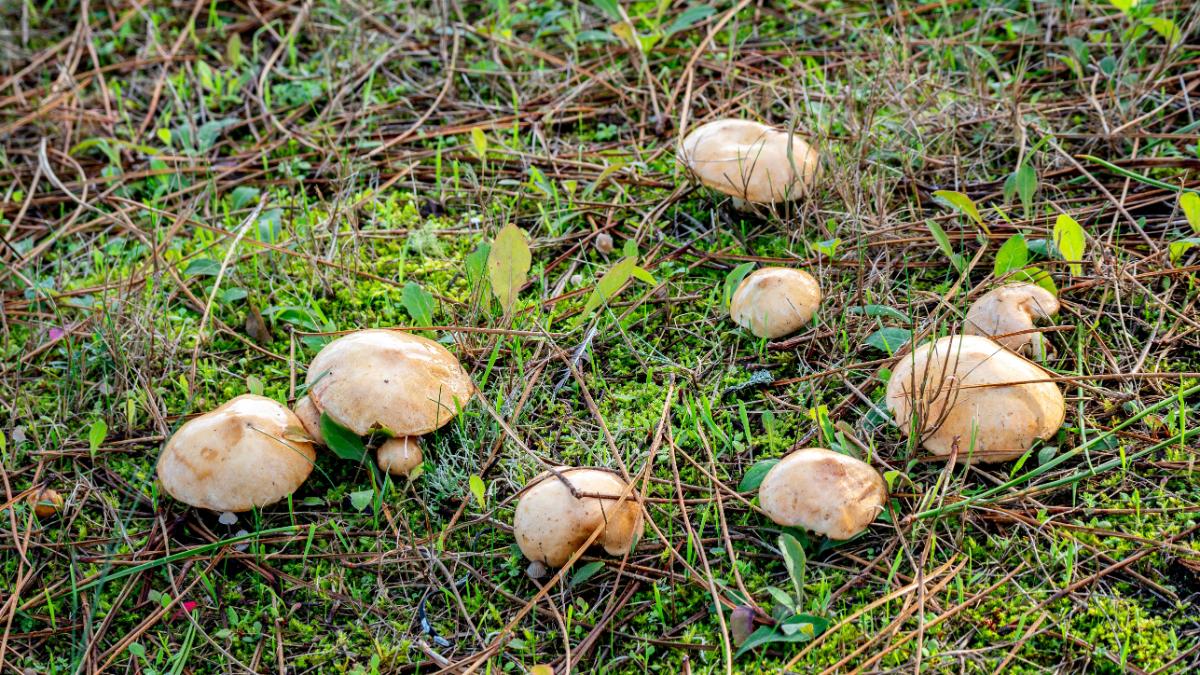
Jump to:
All About The Butterball Bolete
Butterball boletes are a great edible species with a complicated naming history. Most identification guides online and in books identify it as Suillus granulatus. It turns out, as is becoming increasingly common as we do DNA analysis, that S. granulatus is primarily a European species and does not occur naturally here. That being said, S. granulatus does appear in North America, most likely having been brought in with hard pine tree imports—pine trees with 2-3 needles in a bundle.
The real butterball, Suillus weaverae, does not grow with hard pine trees. It only grows with eastern white pine, which is a soft pine with 5 needles in a bundle. This tree preference is the primary way to tell the two species apart because otherwise, they look identical.
Since this separation of species only happened in 2016, there is not a lot of information specific to this species name. However, since the two species are virtually identical, other than the trees they associate with, you can use the same identification and cooking processes for both.
This mushroom species forms a symbiotic mycorrhizal association with eastern white pine. This relationship allows the mushroom to thrive by extracting nutrients from the tree roots while simultaneously benefiting the host tree by enhancing nutrient absorption. This mutualistic interaction typically occurs during the summer through early winter or even over winter in warmer climates.
Suillus lactifluus is a synonym.
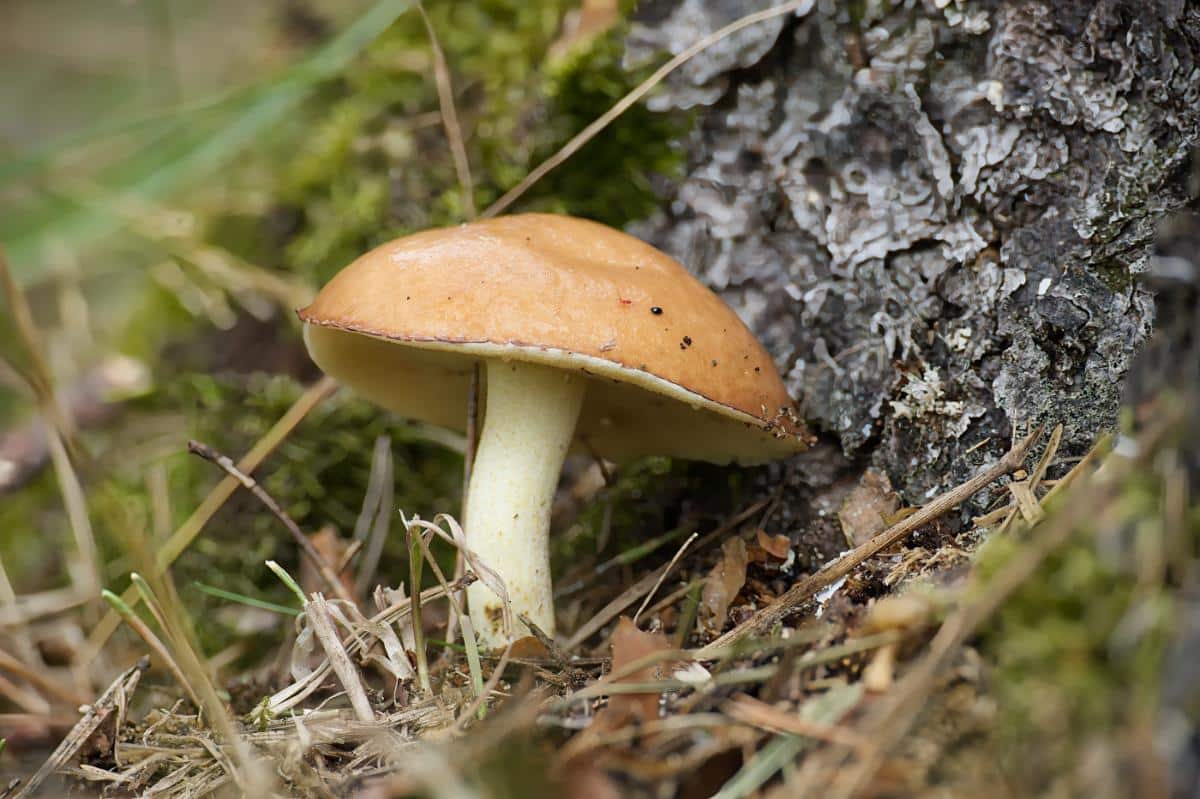
Butterball Bolete Identification Guide
Season
Summer to fall; it is often the first bolete to show up. In warmer climates, it will continue fruiting through winter.
Habitat
The butterball bolete only grows with eastern white pine, both in natural forests and urban plantations. Due to its association with the eastern white pine, anywhere this tree has been moved to be planted, the mushroom is likely to follow. This means it’s not uncommon to find it way outside its natural range. As long as the right tree is there, it may also be.
It grows on the ground mycorrhizal with the trees. It never grows on trees or from wood. These boletes grow singularly, often in dense, scattered groupings.
Identification
Cap
The butterball bolete is distinguishable by its reddish to orangish-brown cap, which may develop a patchwork appearance pattern as it ages. The cap looks heavily dotted at this stage, but when it is younger, there is no patchwork or dotting on it. The young specimens have a dark reddish-brown cap, which fades into a yellow-brown, dull orange-brown, or tan shade as they mature. The surface of the cap is sticky, a common feature of Suillus species.
Caps of this mushroom can get quite large. They average 1-8 inches wide. As you can tell, the overall appearance can vary rather dramatically. It might have a reddish-brown or tan cap, brownish dots all over the cap, or no dots at all. In addition, the stem may or may not have obvious dots as well.
Pores
The pore surface starts off white and gradually changes to yellow. It often stains a dull cinnamon upon aging. The pores often run down the stem very slightly. Very young mushrooms may have milky droplets on their pores.
Stem
The stem of the butterball bolete is white with pinkish or brownish glandular dots all over it or just on the upper half. With age, it may turn yellow just at the top or completely. It does not have a ring.
Flesh and Odor
The flesh is white when the mushroom is young. With maturity, it turns pale yellow. It does not change color when cut. The butterball bolete may be slightly fragrant or not have a smell at all. The taste is either not distinctive or a little bit sour.
Spore Print
The spore print is cinnamon brown to brown.
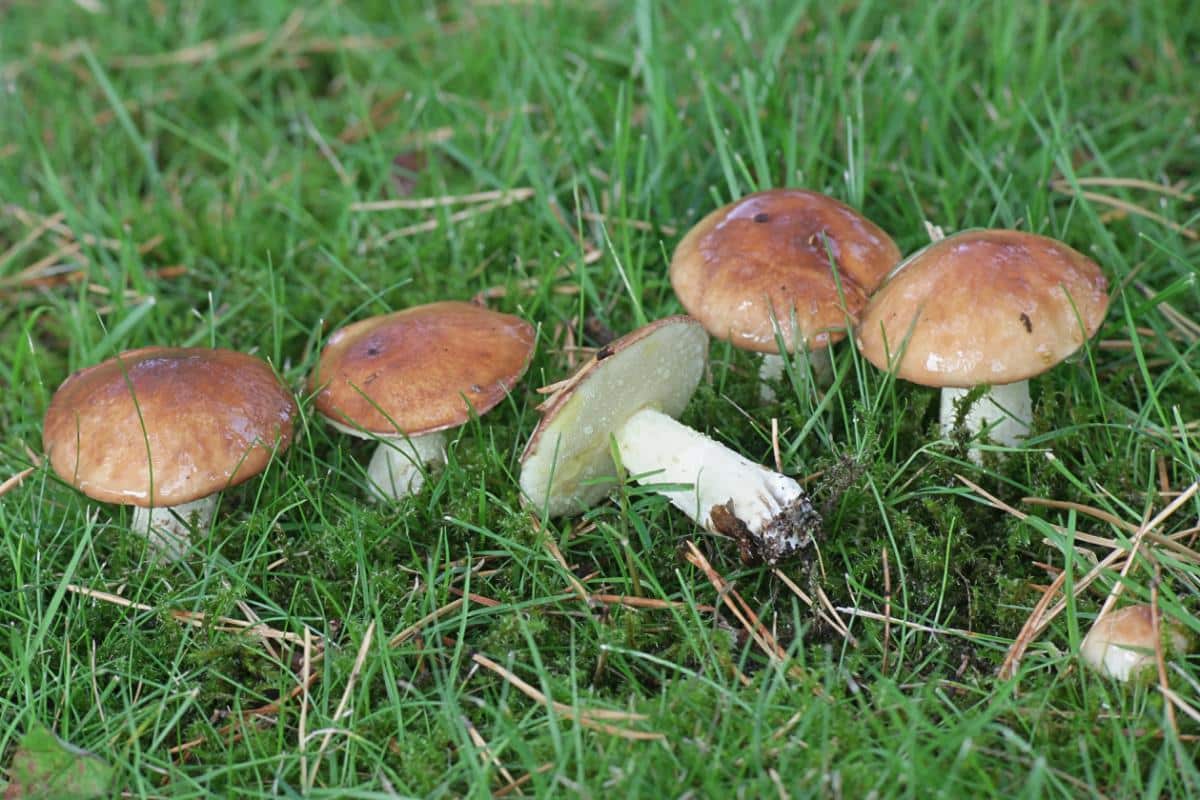
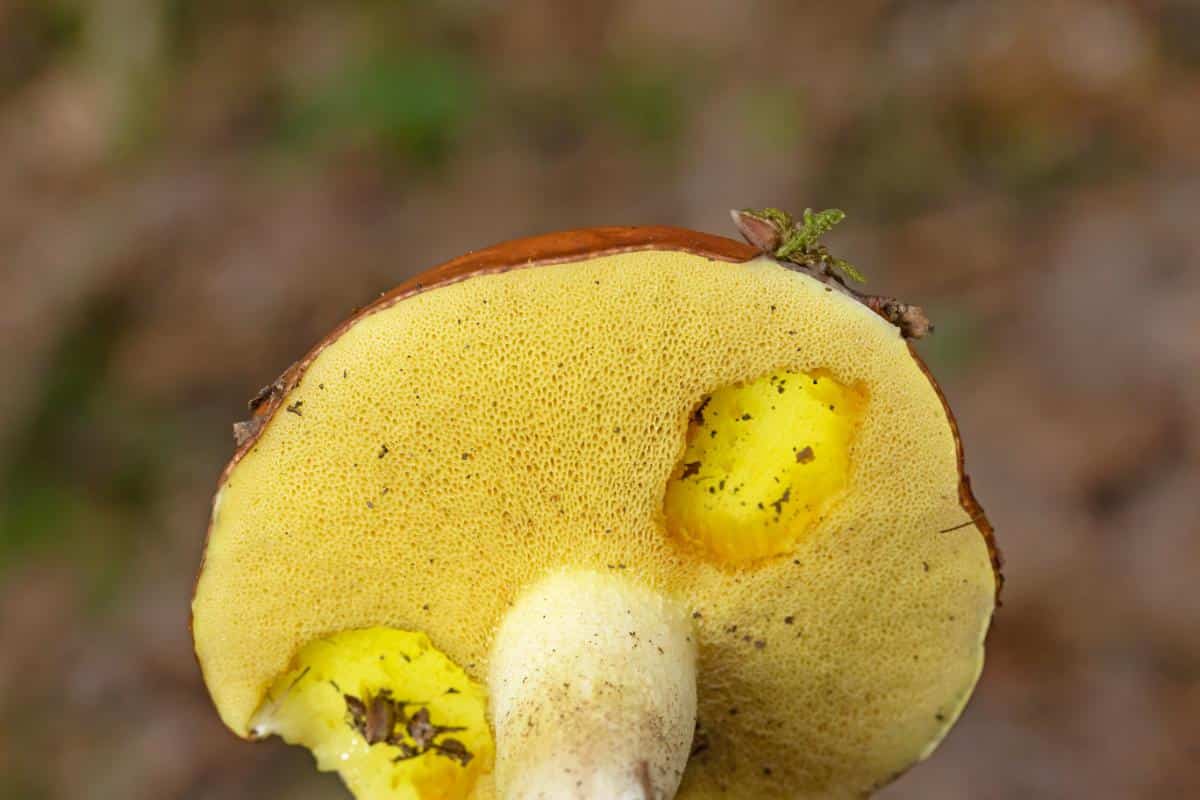
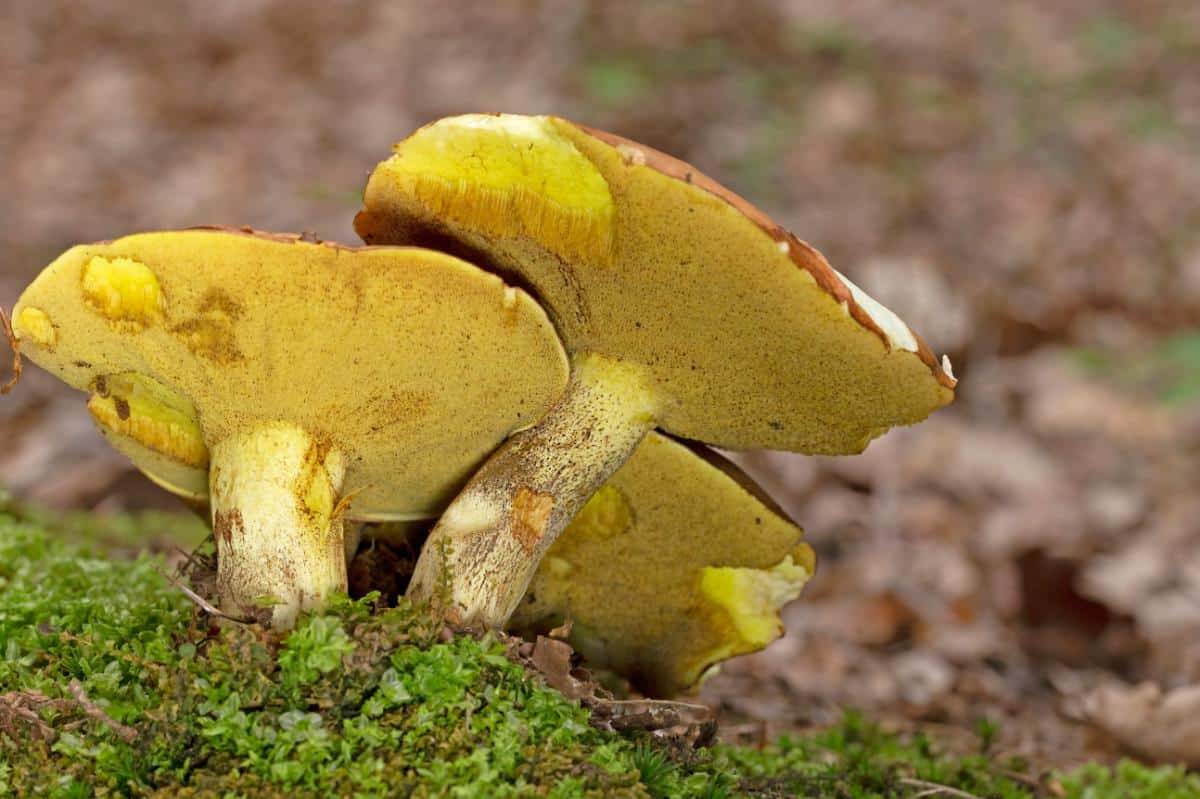
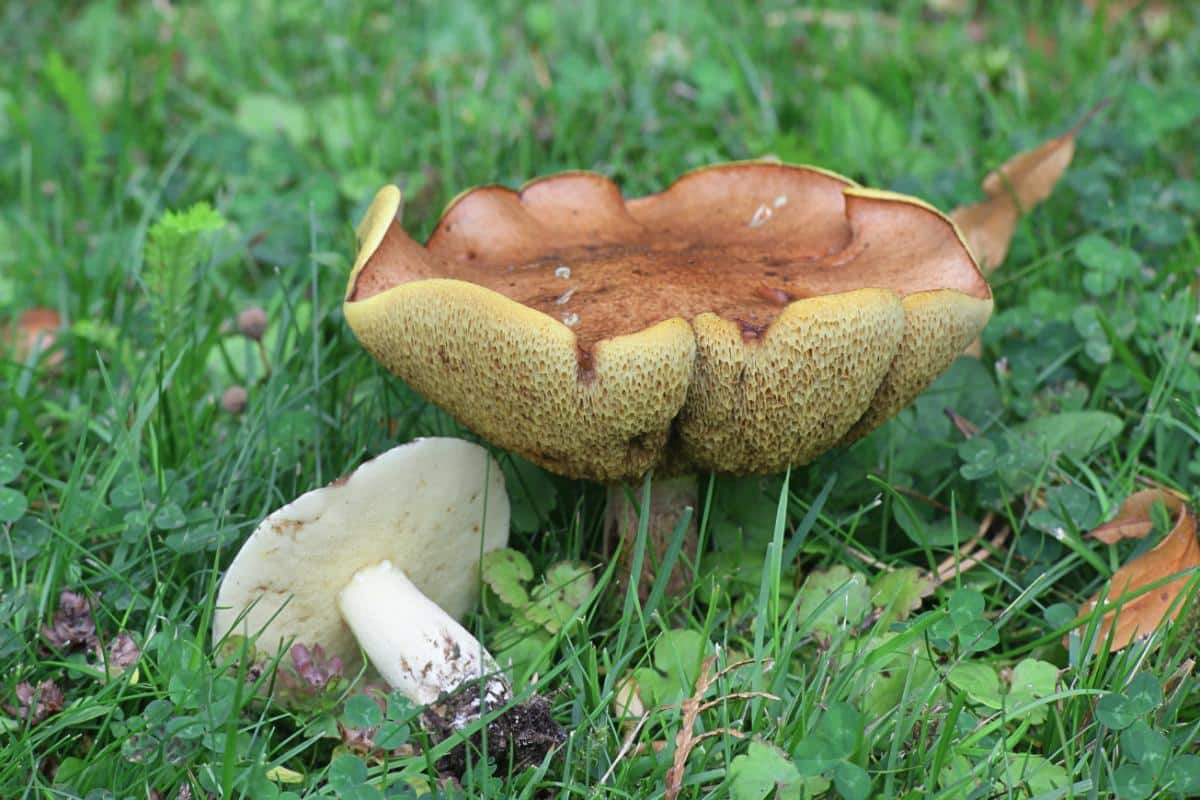
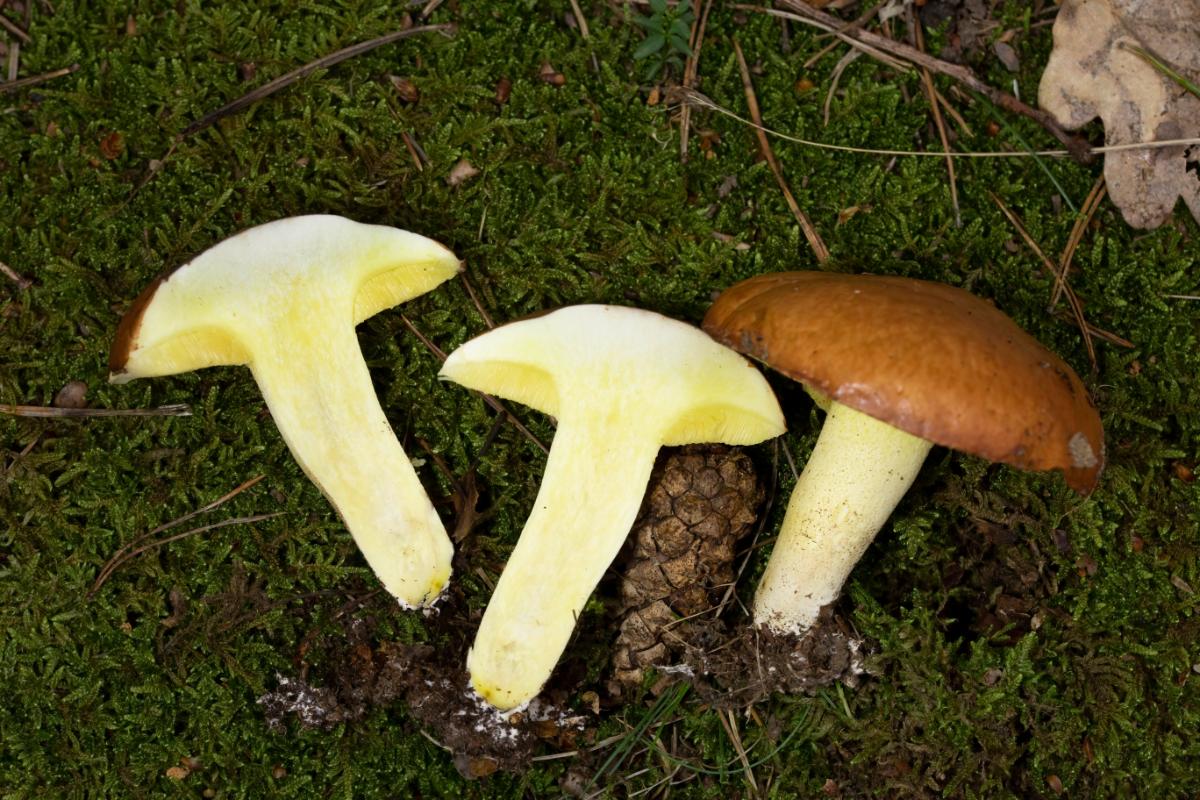
Butterball Bolete Lookalikes
Comparison with Suillus granulatus
Suillus weaverae is often confused with Suillus granulatus. The true Suillus granulatus is a European species that associates with 2-3 needle hard pines. Suillus weaverae, on the other hand, forms symbiotic relationships predominantly with eastern white pine, a soft pine with 5 needles in a bunch. This distinction is crucial.
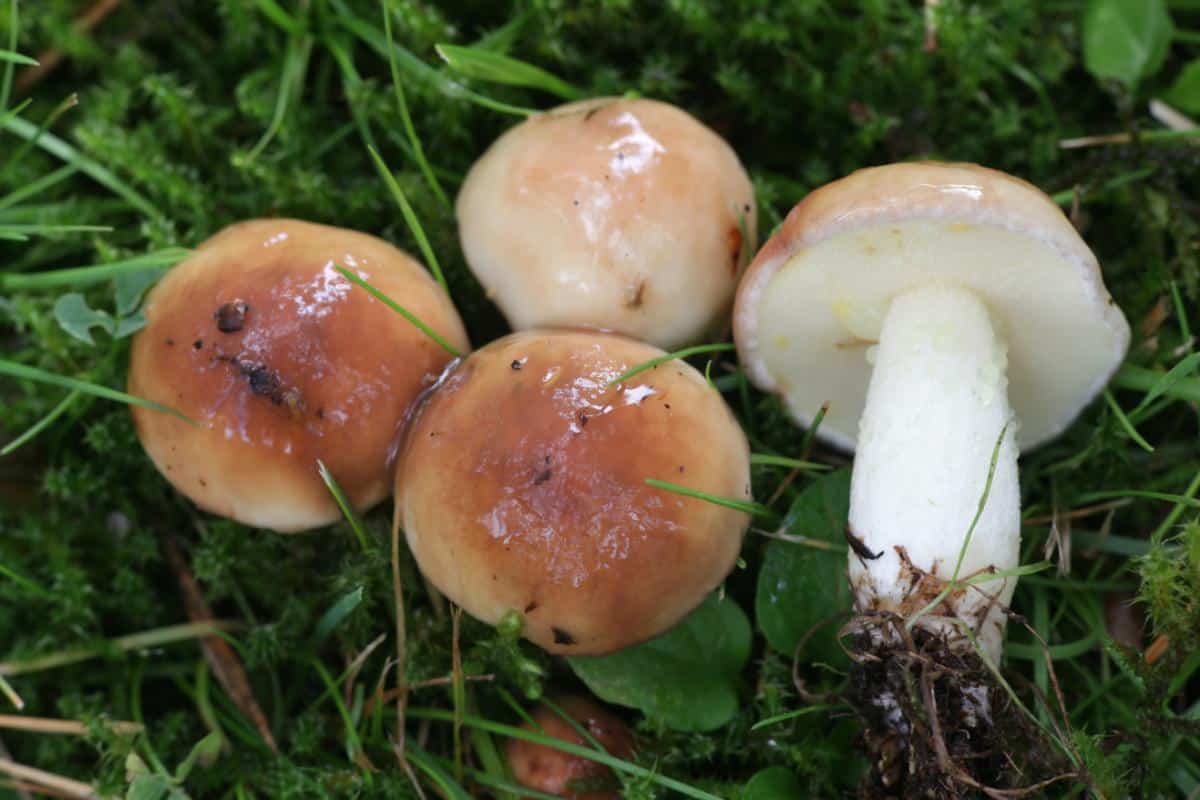
Chicken Fat Mushroom (Suillus americanus)
The chicken fat mushroom has a yellower cap than the butterball bolete. The primary reason it might get confused is because it grows with the same tree host — the eastern white pine. Although the chicken fat mushroom does grow with other pines besides just that one. Their physical appearances are usually distinct enough to tell them apart though.
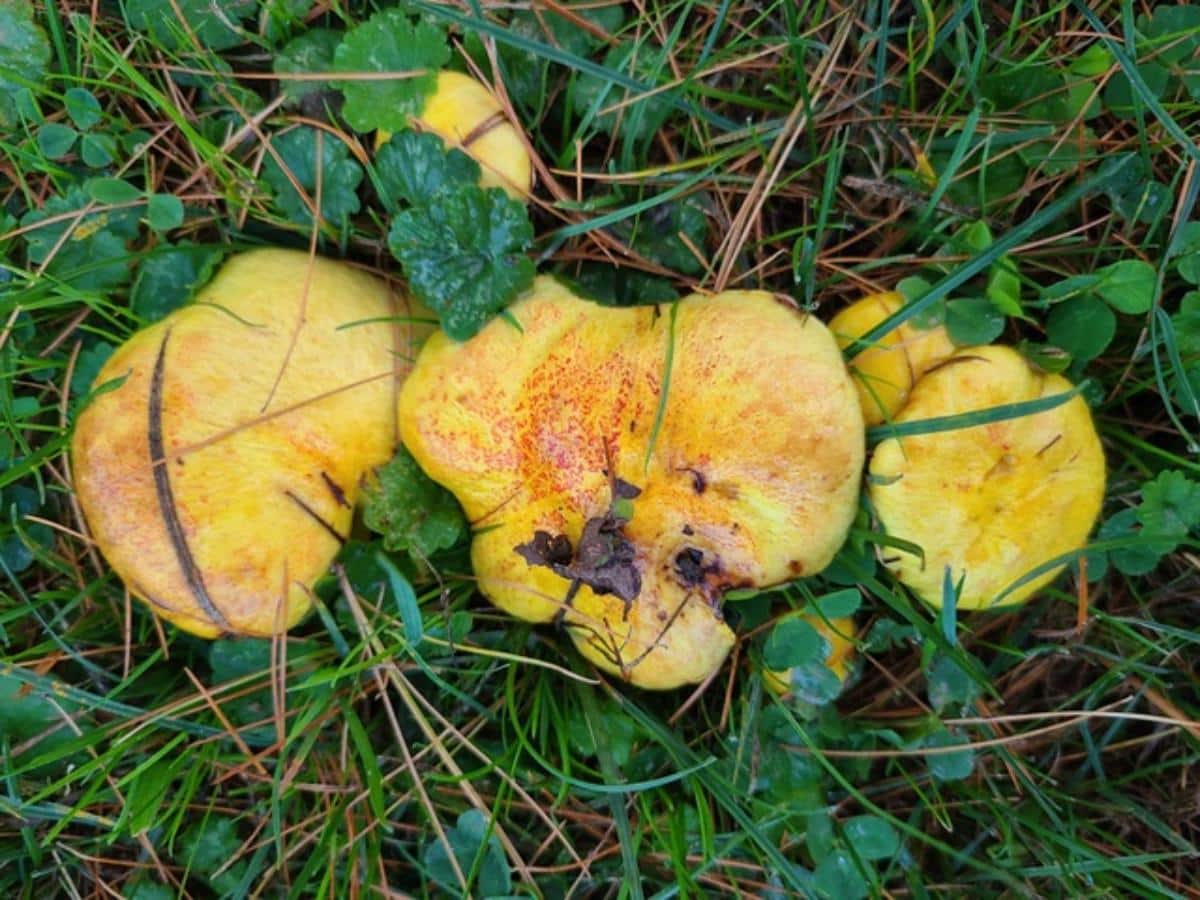
Cooking With Butterball Boletes
Butterball boletes have a mild to slightly sour taste. They contain a lot of water and reduce a lot with cooking. The cap is sticky and slimy, and most people peel it off before cooking because they don’t like the texture. The skin is also a bit more acidic than the rest of the mushroom.
In addition, with larger, older specimens, removing the pores is a good idea. The pores get large and spongy and not that palatable. With young, firm mushrooms, you don’t need to remove the pores.
Removing both the cap skin and the pores can be time-consuming and a deterrent for many people with this mushroom. It’s worth it at least once to see how these mushrooms taste.
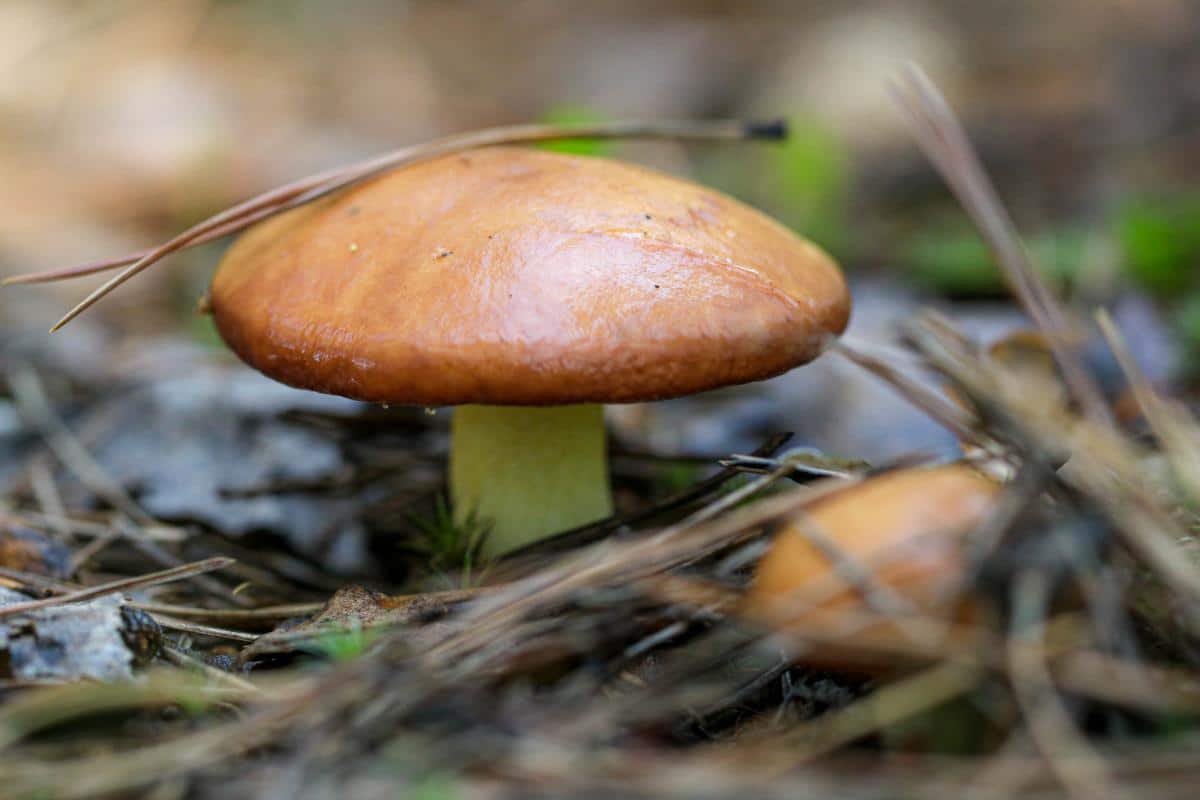
This forager actually doesn’t remove the skin(too lazy!). The old pores are always removed, though. If you place the seasoned mushroom in a hot oiled fry pan, cap skin side down, if fries up rather nicely. It ends up being like a crispy mushroom snack.
As you might guess by the name, butterball boletes are soft and great in stir-fries, soups, risotto, or stews. However, they’re not perfect for every dish since they do not keep their shape. Some might think they’re a bit slimy—a lot depends on the preparation.
This video shows perfectly the method for peeling and removing the pores.
Common Questions About Butterball Boletes
How can you recognize a Suillus mushroom?
Suillus mushrooms often have sticky or slimy caps, pores (no gills), and grow from the ground.
Can you eat butterball bolete mushrooms?
Yes, Suillus weaverae, the butterball bolete is a good edible mushroom. Many people peel off the cap’s skin before eating as it may taste too acidic.
Are other Suillus species safe to eat?
Species such as Slippery Jacks and Chicken Fat mushrooms are also edible.
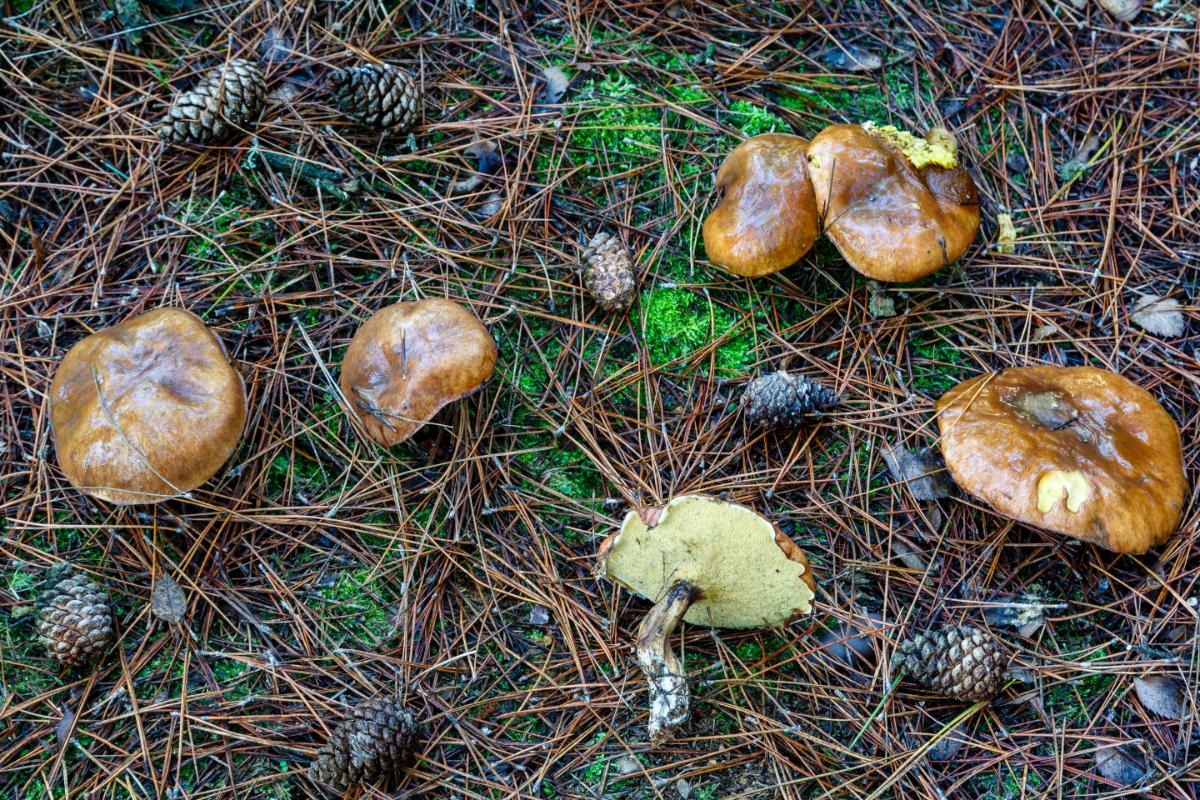





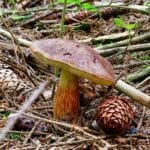
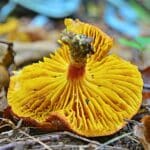

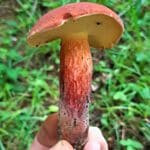
Leave a Reply